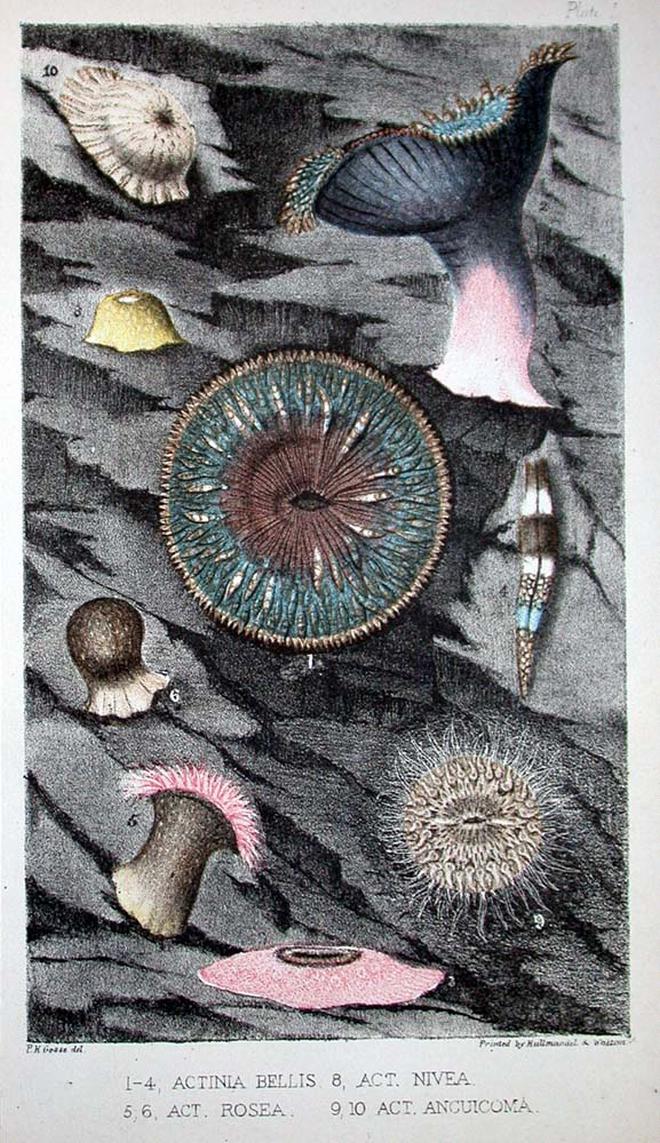On any occasion when you’ve seen an aquarium, have you ever thought about how it came to be? No, not that particular aquarium that you visited, or saw at someone’s house. We are talking about the entire concept of aquariums as a vivarium of any size to house aquatic plants and animals.
The idea, in fact, is less than 200 years old. While a number of people were involved in the invention of the marine aquarium, English naturalist Philip Henry Gosse is credited with promoting the glass tank as a novel way of housing marine creatures. What’s more, he was also responsible for using “aquarium” for this glass vessel, a term that still remains in use.
Love for natural history
Born in Worcester, England in 1810, Gosse was the son of Thomas and Hannah Gosse. Even as a boy, Gosse explored the sea life around Poole, a coastal town in southern England. His love for natural history awakened very early, he was encouraged by his aunt Susan Bell to observe and draw wildlife.
It was from his aunt Bell that Gosse learned about the metamorphosis of insects and the name of the common red sea anemone. Bell even suggested to Gosse that he should try to keep sea anemones alive in vessels of fresh seawater – an inception of sorts for an idea that he later championed. Gosse also took scientific inspiration from Bell’s son Thomas, a naturalist who went on to become professor of zoology at King’s College, London.
Finding his way across the Atlantic to Newfoundland, Canada, Gosse became a clerk in a seal-fishery at Carbonear harbour in 1827. In his early twenties, Gosse began to collect and document insects wholeheartedly in his spare time. When a couple of ventures he tried in Canada failed, he moved to the U.S. where he taught in Alabama, before returning to England in 1839.
Books give him voice
Having received an invitation from a society to write An Introduction to Zoology, his research led him to write another, The Ocean. The unexpected success of his books earned him a fully-financed collecting expedition to Jamaica and his time there led to several more books. By this time, Gosse had not only developed the nuances of being a naturalist, but had also established himself as an important voice in the field.
By the 1840s, Gosse was collecting marine specimens in earnest, going about his business in two main fashions. As the eroding tides had created habitats for diverse lifeforms in the geologically varied shores of Dorset and Devon, Gosse explored these areas on foot. Additionally, he also collected marine species by coastal dredging from a boat.
By combining his love of observing with collecting, studying, drawing, and writing, Gosse became a Goliath in the field. He knew that in order to create reliable records that captured public imagination and led to scientific progress, he needed to keep his collection in good health and have a clear view of them. And so it was that Gosse became an authority in setting up a home-based aquarium, making artificial seawater, and even maintaining the set-up.
World’s first public aquarium
It therefore comes as no surprise that Gosse was one of the most important people in setting up the first public aquarium in the world. Called the “Fish House”, it was set up in Regent’s Park Zoological Gardens as part of the London Zoo and thrown open to the public on May 21, 1853.

In his 1853 book A Naturalist’s Rambles on the Devonshire Coast, the word “vivarium” was used interchangeably with “marine aquarium”. A year later, however, Gosse firmly believed that “aquarium” best described it. He mentioned that the word should be “neat, easily pronounced and easily remembered” in his 1854 book The Aquarium: An Unveiling of the Wonders of the Deep Sea, thereby setting it stone. Additionally, he also stated the following: “Let the word AQUARIUM then be the one selected to indicate these interesting collections of aquatic animals and plants, distinguishing it as Freshwater Aquarium, if the contents be fluviatile, or a Marine Aquarium, if [the contents are salt water-based].”
Against evolutionary concepts
Gosse was a contemporary of celebrated English naturalist Charles Darwin and the latter even turned to Gosse when setting up an aquarium of his own. Even though a lot of their work actually overlapped, Gosse firmly rejected the evolutionary concepts proposed by Darwin owing to his own religious beliefs.
Even though his creationist theories marginalised him, Gosse spent his entire lifetime observing the world around him, until his death in 1888. His work and practical contributions to marine zoology were important to the scientific establishment of his times. And the aquariums that he envisioned still enable us to bring a tiny slice of ocean life home.







